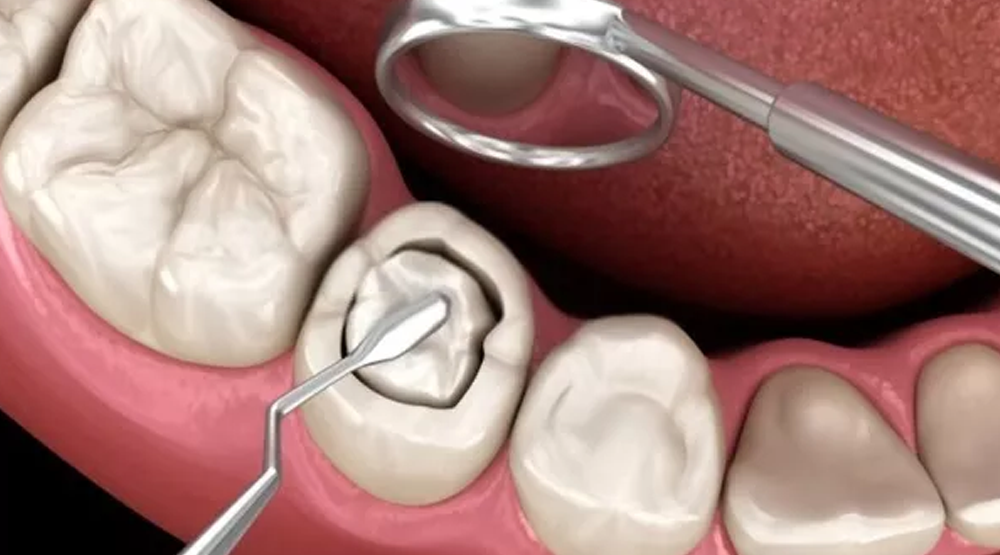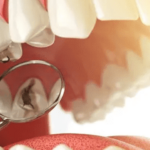
Composite resin fillings are made with various substances, often plastics. One batch of composite resin will be different than the next. Unfortunately, some composite resin fillings contain BPA or other toxic materials that can be released into your body.
Is dental composite toxic? In the past, dental composites have been toxic. Over the years, manufacturers have removed some of the most toxic dental materials from composite fillings. Dental composite shouldn’t contain toxins like BPA these days, but it’s good to check with your dentist.
The components in composite resin can seep out of the resin and into your system due to chewing, saliva, hot drinks, and other reasons.
Also, the expansion rate of composite resin is often different than teeth, potentially resulting in gaps or even cracking.
Fortunately, composite resin fillings are, in general, less toxic than they ever have been. And many people enjoy that they’re tooth-colored.
Early on, composite resin often contained toxic components that leaked into the oral cavity and into the bloodstream. Over time, manufacturers listened to the science and phased out the toxic composite materials. Modern composite resin is often biocompatible.
Do composite fillings have BPA? Some composite fillings have BPA. Luckily, most manufacturers now know that BPA is toxic and do not use it (or anything that chemically turns into BPA).
Biological dentists may recommend composite resin fillings. However, the composite resin they’re suggesting will be different than the toxic composite resin. (Unfortunately, there aren’t two different terms for toxic and non-toxic composite resin.)
To be safe, composite resin should not contain:
- BPA (bisphenol A)
- BisGMA (bisphenol A–glycidyl methacrylate)
- BHT (2,6-di-t-butyl-4-methyl phenol)
- HMBP (2-hydroxy-4-methoxy benzophenone)
- DPICL (diphenyliodonium chloride)
- TPSb (triphenyl-stibane)
- HEMA (hydroxyethylmethacrylate)
- TEGDMA (triethyleneglycoldimethacrylate)
- GLASS IONOMER FILLINGS
Glass ionomer cement fillings are tooth-colored and versatile. Unfortunately, some glass ionomer fillings contain fluoride, which many consider dangerous.
Although fluoride can reverse tooth decay, fluoride exposure has also been linked to various adverse health effects:
- Hypothyroidism
- Increased blood pressure and blood calcium
- Fluoride accumulation in the pineal gland
- Cognitive dysfunction
- Insomnia
- Fatigue
- Muscle weakness
- Preeclampsia (which can result in the death of the expecting mother)
- Earlier onset puberty
- Lower IQ in infants whose mother were exposed to toxic amounts of fluoride
- Increased risk of ADHD in children whose mother were exposed to toxic amounts of fluoride
- Increased risk of autism in children whose mother were exposed to toxic amounts of fluoride
Unlike composite resin, glass ionomer is less susceptible to components leaking out due to saliva. That is a plus.
Like composite resin, glass ionomer mixtures have become less toxic over the years as manufacturers realize some of the components in the ionomer mixtures are not biocompatible and stop using them.
In one study, glass ionomer cement was cytotoxic to tooth and gum cells in humans.
Although new glass ionomer fillings have improved their effectiveness, “studies have indicated that the intrinsic toxicity of glass-ionomer cement is still very high.”
RESIN-IONOMER FILLINGS
Composite resin and glass ionomer may be combined at various ratios to create a hybrid resin-ionomer filling material. This hybrid comes with the benefits and risks of both composite resin and glass ionomer.
Resin-ionomer may contain BPA, fluoride, or other toxic elements, depending on the manufacturer.
However, many modern resin-ionomer fillings contain safe components, such as silica, porcelain, and quartz, and leave out the fluoride.
If your resin-ionomer fillings are recommended by a holistic or biological dentist, you can rest assured that they have made certain there are only biocompatible components going into your mouth — no potential toxins.
PORCELAIN FUSED TO METAL FILLINGS
Although porcelain is widely considered safe and biocompatible, fillings made with porcelain fused to metal fillings have caused allergic reactions on rare occasions.
Also called ceramic, porcelain fillings are great alternatives to mercury fillings. Porcelain is tooth-colored, stain-resistant, mercury-free, and BPA-free. And unlike amalgam and other alternatives, porcelain fillings may last up to 20 years.
However, when porcelain is fused to metal, the heavy metals may seep from the filling substructure into your oral cavity, contributing to heavy metal toxicity.
More of the tooth must be removed to place this filling (compared to porcelain), due to the metal substructure. Most biological dentists agree the less tooth that has to be removed, the better.















Leave a Reply